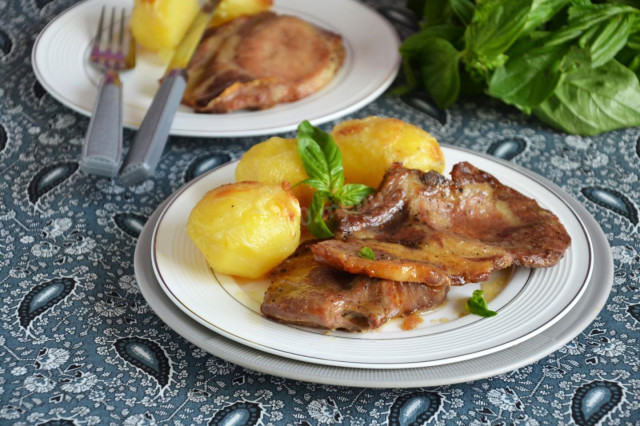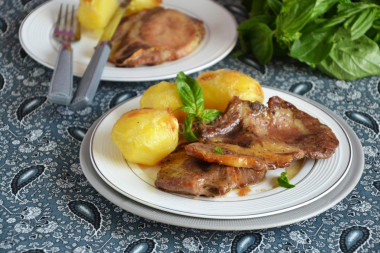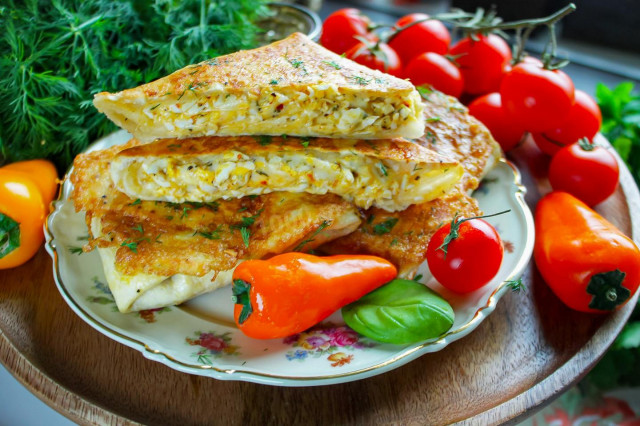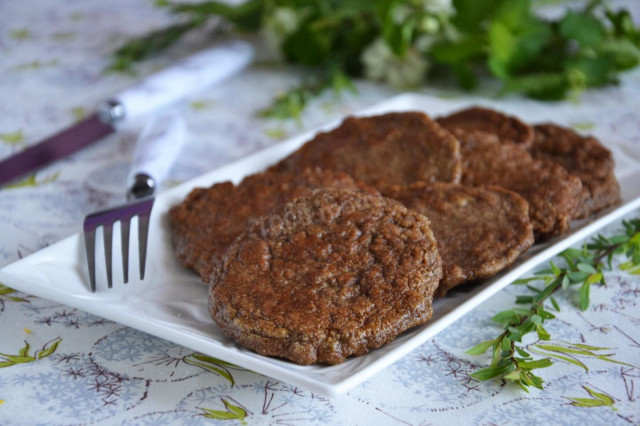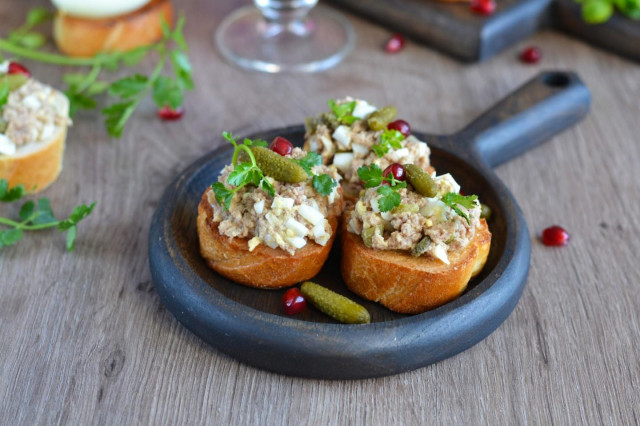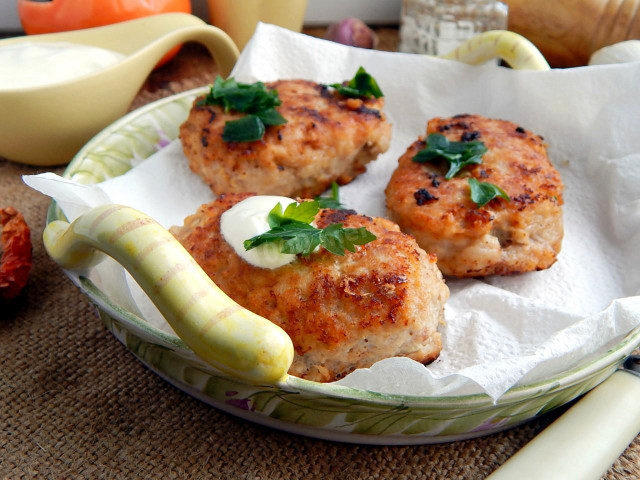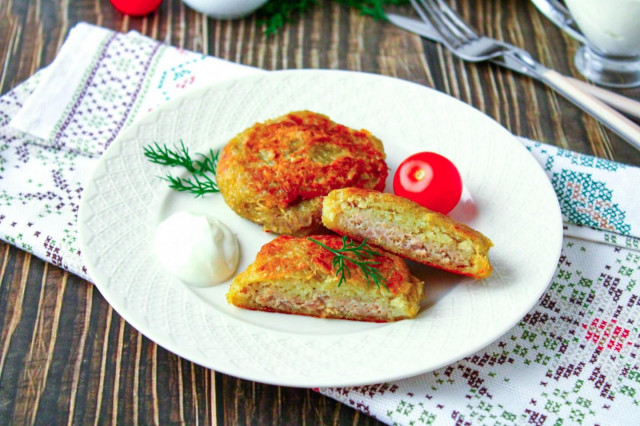Composition / ingredients
Step-by-step cooking
Step 1:
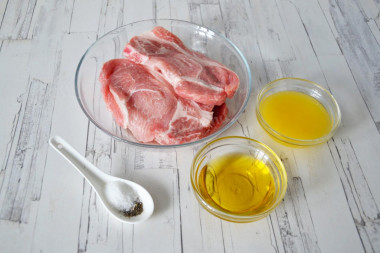
How to make pork entrecote in the oven? Prepare the ingredients. We will need: pork pulp on the bone or without it, preferably with streaks of fat; liquid honey; vegetable oil; ground black pepper and salt.
Step 2:

Cut pork into portions about 1 cm thick. I already had portioned pork slices on the bone.
Step 3:
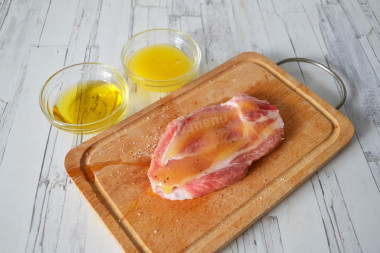
Rub the resulting pieces of meat with salt and pepper on all sides. Liberally lubricate the entrecotes with vegetable oil and liquid honey.
Step 4:
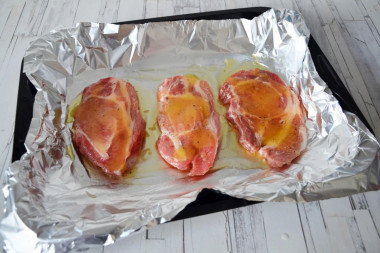
Place the pork on a foil-lined baking sheet or in a baking dish. It is better to take 2 layers of foil so that the fat released from the meat does not stain the baking sheet.
Step 5:
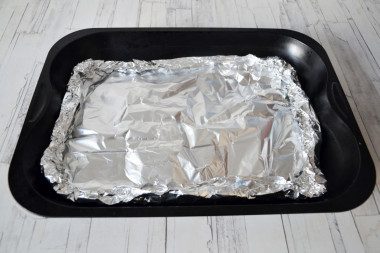
Cover the meat on top with foil and carefully wrap the edges.
Step 6:
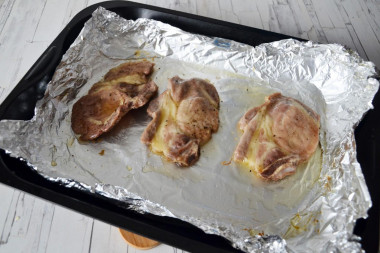
Put the meat in preheated to 200°From the oven for 20 minutes. Then remove the top layer of foil. Grease the entrecotes with honey again. Return the pork to the oven for 5 minutes. Remove the entrecotes from the oven, cover with foil again and let stand for 8-10 minutes.
Step 7:

Serve entrecotes with hot boiled potatoes, or with rice, pasta, buckwheat. Enjoy your meal!
Like many other meat dishes, entrecote came to Russia from French cuisine. Translated from French, it means meat between the ribs. Initially, it was about cow raw materials, however, over time, oxen as the only source of entrecotes lost their meaning, and this word began to denote any piece of fillet with an edge. Today it is most often beef, however, and a piece of pork on the rib can also be called an entrecote. Moreover, sometimes there are phrases fish entrecote, entrecote from catfish and other nonsense, which are beginning to become quite firmly entrenched in the modern language.
Thus, we are talking about cutting on the edge. The meat in this part of the carcass is juicy and tender, it is ideal for quick frying without additional stewing, which usually gives the dish extra softness. By the way, sometimes you can meet the concept of a double entrecote, do not believe the first thought, it's not two pieces of meat, but one, but with two ribs.
If you fry the entrecote on medium or low heat, it will turn out dry. Strong roasting will provide a crisp, ruddy crust and a juicy, baked middle.
How to cook properly in foil? The answer to this question, as well as useful tips and life hacks for cooking different dishes, read the article Aluminum foil is an assistant in the kitchen and at home .
Keep in mind that everyone's ovens are different. The temperature and cooking time may differ from those specified in the recipe. To make any baked dish successful, use useful information about the features of ovens !
In addition to pork, any other meat can be used in this dish. Keep in mind that the cooking time, as well as the taste and calorie content of the dish will change. For example, beef is cooked longer than pork, and chicken fillet or turkey is less.
Caloric content of the products possible in the composition of the dish
- Pork fat - 333 kcal/100g
- Pork meat - 357 kcal/100g
- Pork - low-fat roast - 184 kcal/100g
- Pork chop on a bone - 537 kcal/100g
- Pork - schnitzel - 352 kcal/100g
- Pork Shoulder - 593 kcal/100g
- Boar's leg - 113 kcal/100g
- Pork - 259 kcal/100g
- Honey - 400 kcal/100g
- Ground black pepper - 255 kcal/100g
- Vegetable oil - 873 kcal/100g
- Salt - 0 kcal/100g

